On World Book Day, the UIA is excited to present 17 books about architecture, many of which are slated for release in 2024. From groundbreaking designs to insightful critiques, these books cover a wide range of topics, offering a glimpse into the evolving landscape of architecture. Whether you’re an architect, student, or enthusiast, there’s something for everyone in this captivating collection. Join us as we explore the beauty and significance of architecture through the pages of these remarkable books.

Otti Berger: Weaving for Modernist Architecture
Edited by Judith Raum | HATJE CANTZ
Otti Berger was a pioneering figure in the realm of textiles, particularly during the experimental phase of the Bauhaus movement in the early 1930s. She collaborated closely with architects of the New Objectivity movement, creating innovative floor coverings, wall tapestries, curtains, and upholstery. Her designs not only embraced new production techniques but also challenged conventional notions of function and aesthetics. Despite being relatively understudied, this book presents Berger’s previously unpublished treatise on fabrics, shedding new light on her artistic vision and entrepreneurial spirit. Through systematic organization based on applications, the research underscores the craftsmanship and significance of textiles, often overlooked in architectural and design history.

Solar Adobe: Energy, Ecology, and Earthen Architecture
Albert Narath | University of Minnesota Press
In the 1970s, amidst a global energy crisis, a movement advocating for the use of raw earth materials in building construction gained momentum. This resurgence of interest in adobe construction, a technique historically used by Spanish colonists and the Pueblo people of the American Southwest, became a focal point for discussions on environmentalism, architecture, technology, and Indigenous resistance. Various groups, including architects, historians, counterculture organizations, government labs, and Indigenous activists, explored adobe’s potential to address environmental and political challenges. Albert Narath’s work in Solar Adobe challenges conventional distinctions between high design and vernacular architecture, traditional and modern technologies. By highlighting adobe’s unique capabilities in different contexts, Narath underscores the interconnectedness of environmentalism, Indigenous sovereignty movements, and architecture. Solar Adobe emphasizes the importance of considering both the historical context of the built environment and architecture’s broader impact on the natural world.
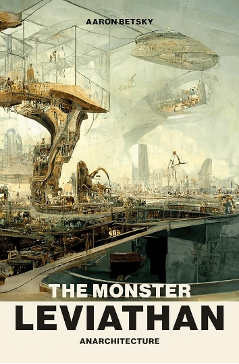
The Monster Leviathan
Aaron Betsky | MIT Press
Aaron Betsky, a professor at Virginia Tech’s School of Architecture and Design, has held prestigious positions in architecture and design institutions globally. In his book The Monster Leviathan, Betsky delves into an unseen architecture lurking beneath our contemporary world—a realm of anarchy, manifested as fantastical hybrids of humans, machines, and cities, or in playful and surreal spaces inspired by literature, art, and design. Betsky argues that these evocations are concrete proposals for alternative worlds, challenging traditional perceptions of architecture. The Monster Leviathan provides tools for envisioning these alternative realities, aiming to inspire creativity and promote discussions about sustainability and social justice. Betsky suggests that this architecture exists simultaneously and not at all, urging readers to explore the myth of building and the possibilities it offers for a better future.

Doshi: The Art of Balkrishna
Edited by Balkrishna Doshi, Khushnu Panthaki Hoof, Roshini Vadehra; Text by Hans Ulrich Obrist | Walther König
Balkrishna Doshi (1927-2023), the first Indian architect to receive the Pritzker Prize, was a trailblazer of modern architecture in Asia. Contemporaries Le Corbusier and Louis Kahn, with whom Doshi collaborated closely in the 1950s, had an influence on his modernist and brutalist designs. But the well-known architect was also a well-known postmodernist artist. The first monograph of its kind examining Doshi’s painting contributions is this one. Though his multicolored concept drawings for his building designs highlight his pragmatic sensibilities, his paintings flirt with abstraction by escaping the mathematical and physical limitations of architecture. Doshi blends Indian sensibilities with Western influence in both of his practices, creating a cognitive universality that gives experience and expression priority.
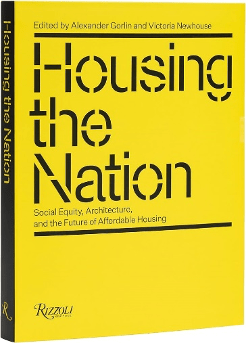
Housing the Nation: Social Equity, Architecture, and the Future of Affordable Housing
Ed. by Alexander Gorlin and Victoria Newhouse | Rizzoli
The text highlights the pressing issue of homelessness and the shortage of affordable housing in the United States, affecting over 650,000 people, including families and individuals with jobs. This crisis exacerbates multigenerational poverty, limits economic mobility, and perpetuates racial injustice, particularly impacting communities of color. The book presents a collection of essays by experts from various fields, including economists, architects, and community organizers, offering diverse perspectives on addressing the housing crisis. Topics discussed include the historical context and scale of the crisis, strategies for creating permanent affordable housing, the intersection of housing and climate change, and the pervasive impact of racial discrimination in the housing market. Illustrated with examples of innovative affordable housing designs by renowned architects, the book provides insight into potential solutions to this complex issue.
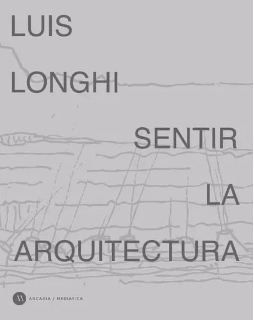
Sentir la arquitectura
Luis Longhi | Arcadia Mediática
This book is a compilation of insights from the architect’s personal logs and recorded conversations, structured around three central themes: feeling, thinking, and doing. The first chapter delves into biographical aspects, exploring key influences and relationships. The second chapter examines foundational concepts shaping the architect’s approach to architecture, including quantum leaps and connections to nature and identity. A selection of significant projects, such as interventions in the Municipal Theatre and Casa Pachacamac, is reviewed in the third chapter. The book concludes with an intimate epilogue reflecting on dreams, hope, closure, and transcendence.

Sigurd Lewerentz, architect
Janne Ahlin | Park Books
While Sigurd Lewerentz (1885–1975) received his mechanical engineering degree from Chalmers University of Technology in Gothenburg, his career path—which elevated him to the status of one of Sweden’s most renowned architects—was shaped by an architectural apprenticeship in Munich.
A brand-new facsimile reproduction of the first monograph ever written about Sigurd Lewerentz, architect, is available here. This iconic book, which was first published in Swedish in 1985, combines text, images, sketches, and blueprints to present his whole body of work and tell the story of his life. Wilfried Wang, a German-Chinese architect, critic, and professor, concludes this edition by placing Lewerentz in a modern context through his work and legacy.
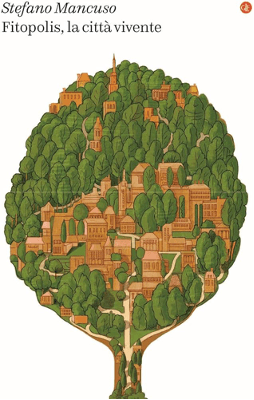
Fitopolis, the living city
Stefano Mancuso | Laterza editions
Mancunso’s book suggests converting urban areas into “phytopolis,” or settings where animal-plant coexistence is as harmonious as it is in the natural world. It is the (utopian?) remedy put forth by scientist Stefano Mancuso in the piece that Laterza published a few weeks ago.
This book depicts a complex scenario by tracing some of the evolutionary stages of our species, which until recently lived literally immersed in nature. Today, living in a metropolis demands a constant flow of resources and energy, which are finite. Furthermore, climate instability adds another layer of complexity. This is the reason restoring nature to our environment is so crucial.
Who will enjoy Green Souls and the designers of the future cities, whether they are newly constructed or refurbished? aware that reestablishing a stronger link with nature is the answer for us men.
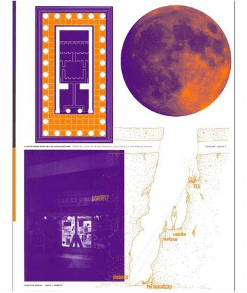
A Nocturnal History of Architecture
Ed. by Vera Sacchetti, Javier Fernández Contreras and Roberto Zancan | Spector Books
Solar and diurnal paradigms have served as the foundation for architectural theory, debate, and agency for ages. There are only a few allusions to the night in Vitruvius’ De architectura, and even fewer in the most important Renaissance treatises by Palladio or Alberti. The development and institutionalization of electric light in both public and private settings did not begin to gradually alter the agency of darkness in the field of architecture until the nineteenth and twentieth centuries. This book is an epic voyage through more than 2000 years of entanglements between night and space design across many continents and geographies, and it is a chronological first attempt at writing a Nocturnal History of Architecture. Through the analysis and study of “night scenes,” this book seeks to demonstrate how the night serves as a testing ground for novel conceptions of space and, eventually, of existence.
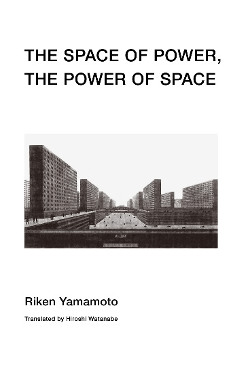
Space of Power, Power of Space: Designing the Relationship between the Individual and the State
Riken Yamamoto | Birkhauser
Riken Yamamoto received the 2024 Pritzker Award, being the 9th Japanese architect to have won the prize. Yamamoto’s writing in The Space of Power is noted for its clarity and conciseness. Date to be published in October of this year, the book marks a departure from an era where Japanese architects felt compelled to delve into complex theories about the nature of architecture. Reflecting on the landscape of architectural discourse over the past decade, the author expresses regret for not discovering the book earlier. While the text is in Japanese, the lack of translation is understandable given the nuanced nature of the content. The title itself presents translation challenges, with different interpretations depending on the orientation of the slash symbol. In the absence of a definitive interpretation, the translator opts for “vs.” to convey the notion of opposition between “The Space of Power” and “The Power of Space.”
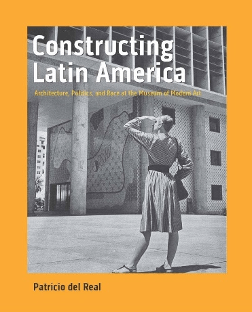
Constructing Latin America. Architecture, Politics, and Race at the Museum of Modern Art
Patricio del Real | Yale University Press
Del Real’s examination of exhibitions spanning the interwar period through the Cold War sheds light on the ideological underpinnings of the Department of Architecture’s endeavors, particularly the role of Pan-Americanism in positioning the United States on the cultural forefront. Despite the perception of modern architecture as a tool of imperialism, Del Real highlights MoMA’s nuanced approach, which involved back-and-forth dynamics with Latin America while safeguarding U.S. interests. The book unveils MoMA’s shifting discourses on architecture in Latin America, showcasing how it mirrored broader geopolitical tensions and sought to define an “American” civilization. Del Real emphasizes the promotion of mestizo identities, especially through Brazilian architecture, as exemplifying racial conciliation. However, MoMA’s institutional vision, influenced by Alfred H. Barr, Jr., perpetuated an ideological-political agenda rooted in aesthetic quality, leading to the eventual curbing of Brazilian modernism’s influence.
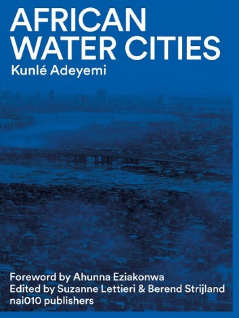
African Water Cities
Kunlé Adeyemi | Nai Uitgevers
Cities that are coastal or riverfront in particular suffer loss and destruction as a result of notable rises in sea level, precipitation, and flooding. African cities are experiencing an increase in growth potential concurrently. The future of urban and rural developments in Africa, home to individuals who are redefining our understanding of cities through creative adaptations of spaces, materials, and infrastructure, depends on the intersections of water and cities. These developments will inevitably involve existential factors pertaining to humanity and the environment.
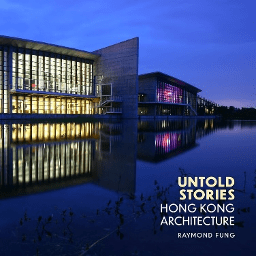
Untold Stories: Hong Kong Architecture
Raymond Fung | Unicorn Publishing Group
This book aims to shine a spotlight on the talented but often overlooked local architects of Hong Kong, whose original work has made significant contributions to the city’s landscape. It seeks to tell the stories of these gifted individuals for the first time, offering them the recognition and admiration they deserve. Renowned ink painter and architect Raymond Fung JP; FHKIA; HonAIA(HK) is among those featured in the book. With over 50 significant honours in visual arts, architecture, and interior design, including the Hong Kong Ten Outstanding Designers’ Award, Fung is recognized for his exceptional contributions to the field. Currently serving as an adjunct professor at the Chinese University of Hong Kong School of Architecture and holding various advisory roles in organizations such as the Hong Kong Observatory and the LCSD Museum, Fung brings his wealth of experience and expertise to the exploration of Hong Kong’s architectural landscape.
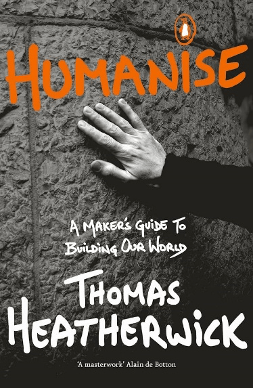
Humanise: A Maker’s Guide to Building Our World
Thomas Heatherwick | Viking
Thomas Heatherwick launches the “Humanise” campaign, aiming to address public health issues caused by mundane buildings and inspire better architectural standards worldwide. Research shows that bland structures contribute to higher stress levels, affecting mental well-being. Additionally, such buildings significantly contribute to the climate crisis, with construction and demolition generating substantial carbon emissions and waste. Heatherwick emphasizes the need for buildings that captivate attention and advocates for emotional consideration in architectural design, long-term thinking for durability, and focusing on engaging features near entrances.
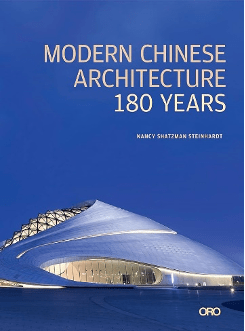
Modern Chinese Architecture: 180 Years
Nancy C. Steinhardt | ORO Editions
Modern Chinese Architecture: 180 Years offers a concise overview of China’s architectural evolution from 1840 to 2020. The book tracks the shift from traditional timber-frame structures to contemporary skyscrapers and eco-friendly materials, providing historical context for each phase. It narrates China’s journey from monarchy to republic to a people’s republic, illustrating how architectural changes mirror societal advancements like literacy and urbanization. Through insights from five generations of architects, including foreigners and contemporary designers, the book showcases the diverse influences shaping China’s architectural landscape over a century.
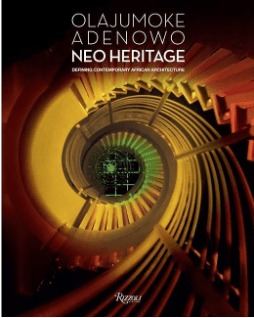
Neo Heritage: Defining Contemporary African Architecture
Olajumoke Adenowo | Rizzoli
Published last year, the book introduces Olajumoke Adenowo, a renowned Nigerian architect known as “Africa’s starchitect” and a significant female figure in the field. Adenowo founded AD Consulting in Lagos in 1994 and achieved academic success early, earning degrees in architecture by age 19. Her interest in architecture stemmed from childhood trips and her upbringing in a university environment. Throughout her career, Adenowo has embraced her African heritage while maintaining a global perspective, aiming to promote best practices in African contemporary architecture. Her thesis, “Neo-Heritage,” seeks to integrate African heritage design ideas into global architectural solutions. Adenowo is recognized internationally for her achievements and also advocates for women’s empowerment, global aesthetics, and African entrepreneurial leadership.

L’Architettrice
Melania G. Mazzucco | Einaudi
And in addition to this list of architecture books that will be published in 2024, we will mention one last publication from 2022, L’Architettrice. We would like to talk about this piece having in mind 8th March as International Women’s Day, since it aims to recognize those first female architects who were not recognized at the time.
Melania Mazzuco’s novel, which follows her normal course of rescuing people from official histories and painstakingly reconstructing Baroque Rome through a narrative that strays from hegemonic canons and places well-known lead players in a supporting role. Thus, rivals like Bernini and Borromini, as well as Popes Urban VII and Innocent X, Guido Reni, and Pietro da Cortona, are merely incidental figures in the life of a young lady who hoped to represent transformation, a new era, and a chance for all women to start again.